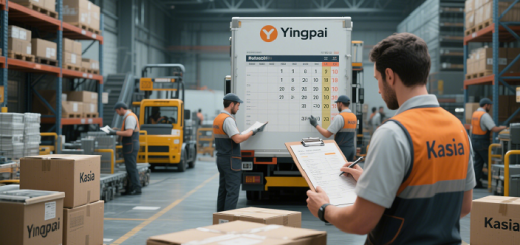Automated Notifications: Stay Updated on Your China Consolidated Shipment Status
Introduction
In today’s fast-paced global trade environment, businesses and individuals sourcing goods from China face increasing demands for shipment tracking and logistics management. Traditional manual tracking methods are not only time-consuming and labor-intensive but also prone to delays and errors. Automated shipment notification systems have become an indispensable tool for businesses and logistics providers. They enable real-time monitoring of shipment statuses, ensuring timely information delivery and enhancing logistics efficiency.
Advantages of Automated Shipment Notifications
- Real-Time Information: Automated notifications allow businesses to receive immediate updates on shipment statuses, such as dispatch, arrival at ports, customs clearance, and delivery. This ensures that businesses can stay informed about logistics progress at all times.
- Improved Efficiency: By automating the notification process, businesses eliminate the need for manual tracking and data entry, reducing labor costs and operational efficiency.
- Enhanced Customer Experience: Customers can also receive timely updates on shipment statuses, increasing transparency and satisfaction. This helps build trust and loyalty between businesses and their clients.
- Risk Mitigation: Real-time alerts for potential shipment delays or issues enable businesses to take prompt action, minimizing risks and losses.
Key Features of Automated Shipment Notification Systems
- Multi-Channel Notifications: Supports various notification methods such as email, SMS, and in-app messages to ensure businesses receive updates through their preferred channels.
- Customizable Alerts: Allows businesses to set personalized alert rules based on shipment status and timeline requirements. For example, notifications can be triggered when shipments depart, arrive at ports, clear customs, or are delivered.
- Integration with Logistics Systems: Seamlessly integrates with major logistics providers’ systems to automatically retrieve and update shipment tracking information.
- Data Analytics and Reporting: Provides detailed logistics data analysis and reporting functionalities, helping businesses gain insights into logistics performance and optimize supply chain management.
Steps to Implement Automated Shipment Notifications
1. Choose a Reliable Freight Forwarder
Select a freight forwarder with advanced logistics tracking capabilities and support for automated notification systems. Professional freight forwarders like China Top Forwarder and Supplyia offer comprehensive logistics services, including customs clearance, transportation, warehousing, and automated shipment notifications. When evaluating freight forwarders, consider their reputation, service quality, and technological capabilities to ensure they meet your needs.
2. Integrate with Logistics Tracking Platforms
- Carrier Websites: Major carriers such as China Post, UPS, FedEx, and DHL provide online tracking services. By entering the tracking number on the carrier’s website, shippers can access real-time shipment status updates. Automated notification systems can integrate with these platforms to automatically retrieve tracking information and send updates to businesses.
- Third-Party Logistics Platforms: Platforms like 17TRACK and AfterShip support multiple carriers and offer comprehensive logistics tracking services. Businesses can consolidate shipment tracking information from different carriers on a single platform and enable automated notifications.
3. Set Up Automated Notification Rules
- Define Notification Triggers: Determine which shipment status changes should trigger notifications, such as dispatch, arrival at port, customs clearance, or delivery.
- Select Notification Recipients: Specify the personnel or departments within your business that need to receive notifications, such as sales teams, logistics departments, or customer service representatives.
- Customize Notification Content: Tailor the content and format of notifications based on recipient needs. For example, sales teams may require detailed shipment information to communicate with customers, while logistics departments may focus on handling instructions and timelines.
4. Test and Optimize the Notification System
- System Testing: Conduct thorough testing of the automated notification system to ensure it accurately retrieves and sends shipment tracking information. Verify that notifications are delivered promptly and contain the correct content.
- Feedback Collection: Gather feedback from users within your business to identify any issues or areas for improvement in the notification system. Make necessary adjustments based on this feedback to enhance system performance and user experience.
Benefits of Automated Shipment Notifications for Businesses
- Enhanced Logistics Control: Real-time updates on shipment statuses enable businesses to better manage logistics processes, anticipate potential issues, and take proactive measures to ensure smooth operations.
- Improved Customer Service: By providing customers with timely shipment status updates, businesses can enhance transparency and trust, leading to higher customer satisfaction and loyalty.
- Cost Reduction: Reduced labor costs associated with manual tracking and minimized risks of shipment delays or losses contribute to overall cost savings for businesses.
- Data-Driven Decision-Making: Detailed logistics data from automated notifications helps businesses analyze logistics performance, identify bottlenecks, and optimize supply chain management strategies.
Case Study: Successful Implementation of Automated Shipment Notifications
A U.S.-based e-commerce company sources a large volume of goods from China. Previously, the company relied on manual methods to track shipments, which often resulted in delays and inefficiencies. By partnering with a freight forwarder offering automated shipment notification services, the company integrated its logistics system with the forwarder’s platform. The company configured automated notification rules to receive real-time updates on shipment statuses via email and SMS. This enabled the company to promptly address potential issues during transit, reducing delivery times by 15% and improving customer satisfaction by 30%.
Conclusion
Automated shipment notification systems are powerful tools for businesses sourcing goods from China. They provide real-time shipment tracking updates, enhance logistics efficiency, and improve customer experience. By selecting a reliable freight forwarder, integrating with logistics tracking platforms, and configuring automated notification rules, businesses can effectively implement automated shipment notifications. This allows them to stay informed about shipment statuses, optimize logistics management, and achieve sustainable growth in an increasingly competitive market.

